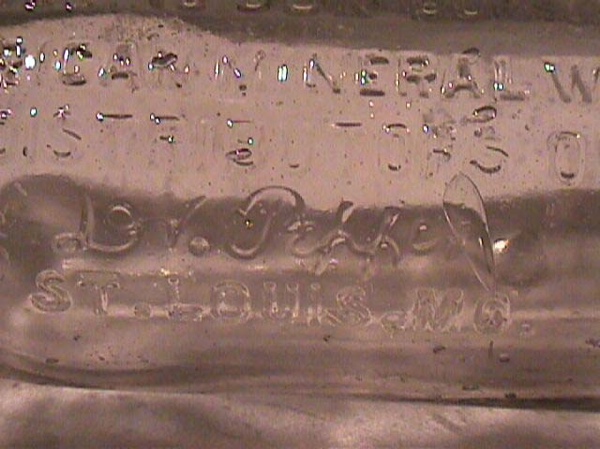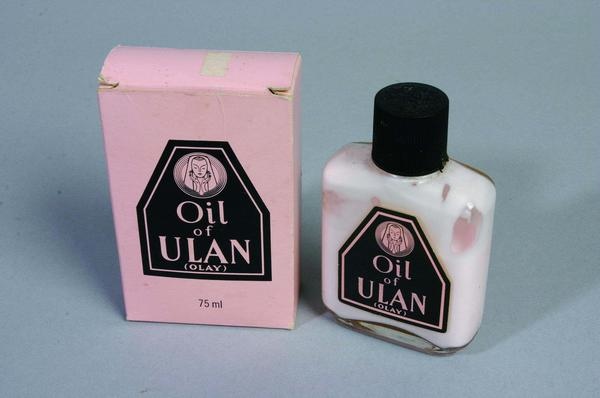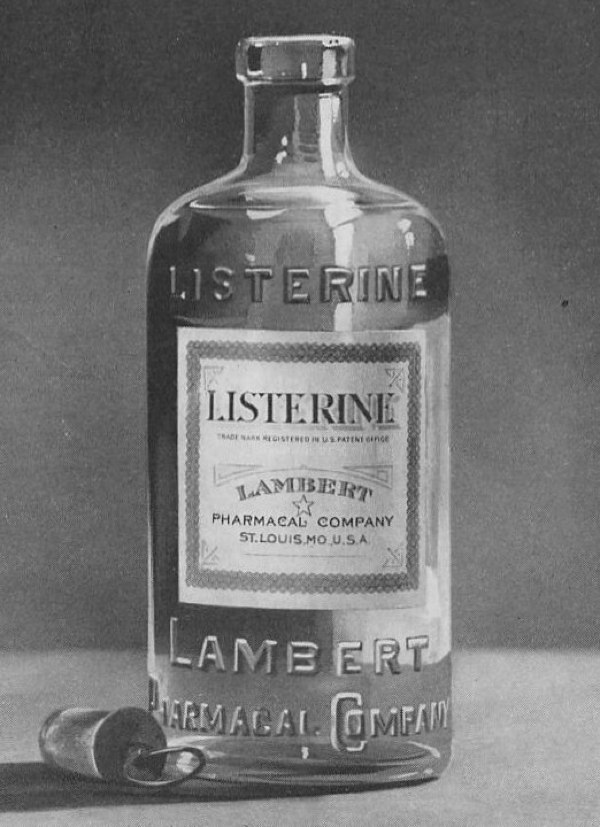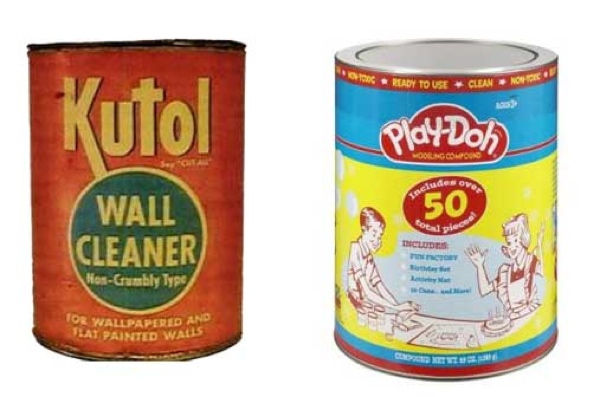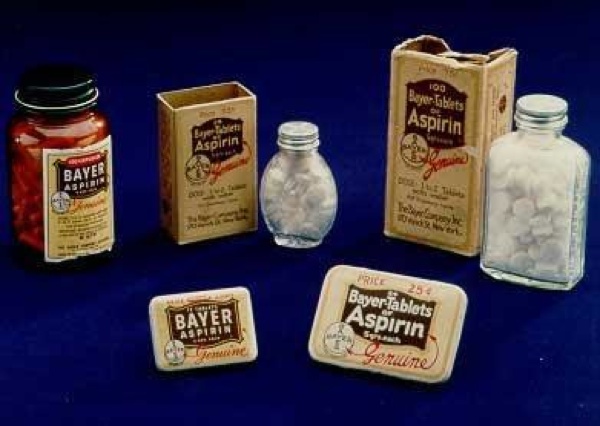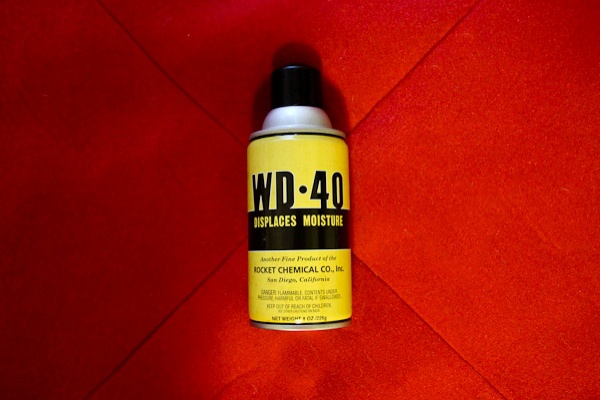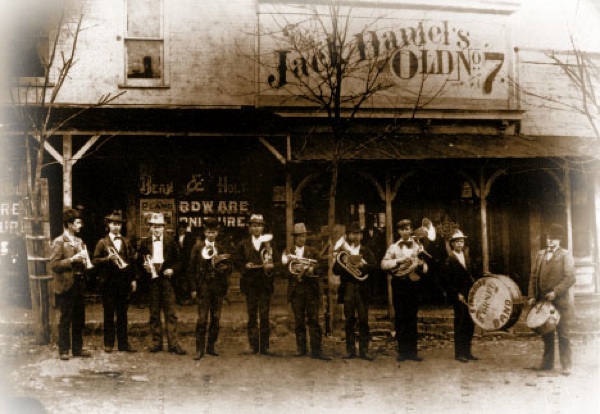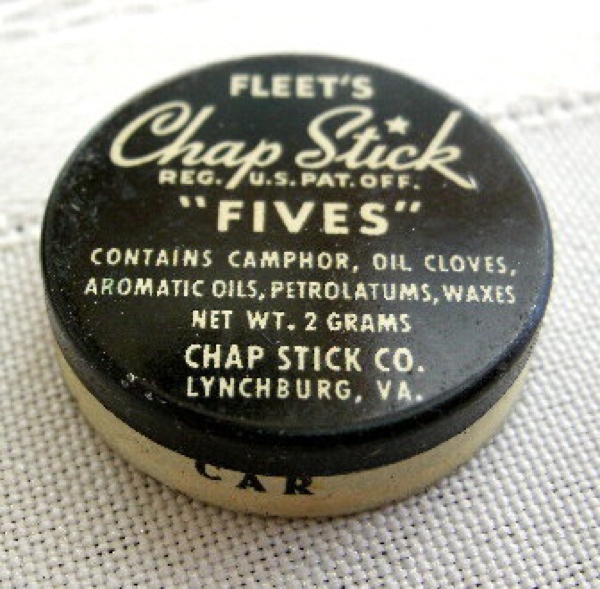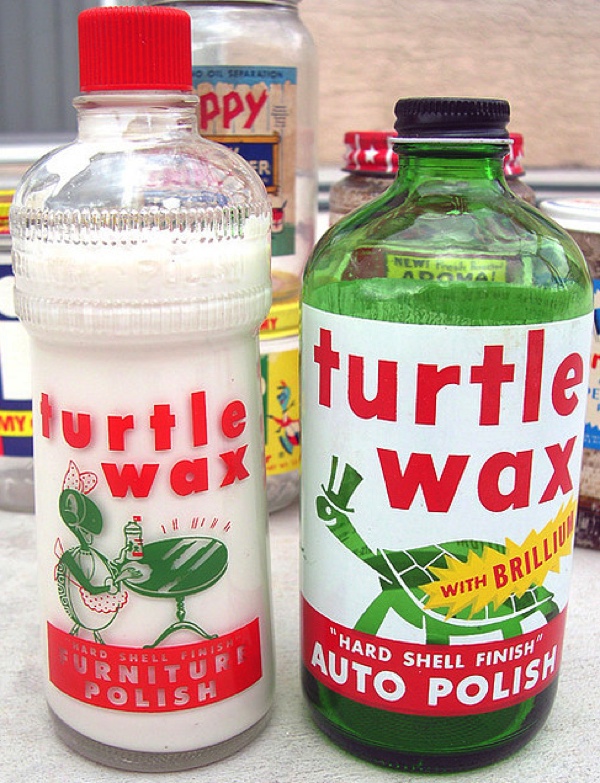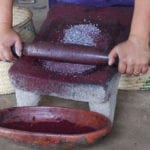The following products have been around for a very long time, some for a hundred years or more. They’ve become an iconic and ingrained part of our culture, and the little-known and fascinating stories behind their creation and marketing deserve to be told.
It’s somewhat of a misconception that Dr Pepper was created by a doctor (we can’t imagine why), but it’s not too far from the truth. The inventor of the world’s oldest soft drink (in 1885) was Charles Alderton, a pharmacist at Morrison’s Old Corner Drug Store in Waco, Texas. It’s also somewhat commonly believed that it was created as a medicine, but that’s untrue: Alderton just enjoyed mixing up flavorful, fizzy stuff when we wasn’t being a pharmacist. He enjoyed the smell of all the fruity syrups from the soda fountain mingled together, and set out to create a drink that tasted like that smell. Owner Wade Morrison loved the new drink, and supposedly named it after a friend, a Dr. Charles Pepper. As demand grew, Alderton and Morrison found it easiest to simply sell the syrup to merchants around town, who could mix it with carbonated water themselves—thus becoming the first manufacturers of soda concentrate. Eventually, Alderton grew tired of fizzy mixings, and sold his side of the business to Morrison, who promptly partnered up with Robert Lazenby, owner of a moderately successful ginger ale company. The pair introduced their concoction to the public at large at the 1904 World’s Fair Expo in St. Louis—the very same world fair that introduced the hamburger, the hot dog and the ice cream cone—and Dr Pepper has been one of the top soft drinks in the US ever since.
Olay is a multi-billion dollar skin care line from the venerable Proctor & Gamble company that, until 1999, was known as Oil Of Olay in the US and many other countries. Most of us are familiar with the white, creamy stuff in the plastic bottle. Of course, neither of those things applied at its inception, and its developers relied on some pretty unusual testing and marketing techniques. Graham Wulff, a chemist from South Africa, developed the stuff in 1949 and called it Olay as a variation of lanolin, the main active ingredient. It began as a pink fluid in a heavy glass bottle, and Wulff—along with partner Jack Lowe, a copywriter and ad man—initially tested the product on their wives, because what’s the worst that could happen? Fortunately, nothing bad did, and in fact the product proved effective in softening wrinkles and contributing to healthy-looking skin. Early advertisements simply promised to share the “secret of a younger you,” and didn’t refer to the product as a moisturizer, or . . . anything else. Similarly, nowhere on the bottle did it say what the product was for—it relied largely on mystery, curiosity and word of mouth. Obviously, it worked; the product known in various countries as Oil Of Ulay, Ulan or Olaz has become quite entrenched in the beauty industry.
Listerine was developed by Dr. Joseph Lawrence, based on pioneering work done by Joseph Lister, whom he named it after. It wasn’t intended for oral use however—it was simply an antiseptic, and the first one. Before Lister’s discovery that carbolic acid killed germs, far more people died from infections incurred during surgery than from the injuries themselves (illustrated by a saying from the time: “The operation was a success, but the patient died.”) Consider: since nobody knew how to stop infections before Lister, amputations (to keep them from spreading) were the most common major surgery of the time, and the death rate from this procedure was around forty percent. By the time Listerine had been in use for about twenty five years, in 1910, the death rate from amputations had dropped to a measly three percent. One shudders to think how many more who were injured in World War I (still the one of the deadliest wars of all time) would have died if not for Listerine. Because carbolic acid is hard on the skin, surgeons eventually began using boracic acid in its place. But Listerine’s use had been growing as an oral antiseptic, and eventually that use eclipsed any other. The mouthwash market was originated by Listerine, the only product (with the possible exception of the condom) to both save millions of lives and make date night more awesome.
Noah McVicker and his nephew, Joseph, are the inventors of Play-Doh, the non-toxic modeling clay that smells weird, yet really makes you wonder what it tastes like. The story goes that Joseph McVicker had a conversation with a teacher friend about what a pain regular modeling clay—the kind his students used in class—was to work with and clean up, and a light bulb went off over Joe’s head. See, the McVickers were the owners of Kutol Chemicals, a reasonable successful company that sold a clay-like substance that bore the company’s name as a wallpaper cleaning compound. He shipped off a box to his teacher friend, and the kids loved it—even though the only color available was a dull off-white and the packaging, as you can see above, was a little less fun than what we’ve come to associate with the product. The word started getting around, and before long the McVickers decided that the wallpaper-cleaning game was for suckers. They started a new company, Rainbow Crafts, and began marketing their clay under the familiar name and in a variety of colors. The company was bought by General Mills in 1965 and merged with Kenner in 1971; some two billion cans of the stuff later, it’s hard to believe Play-Doh was ever anything but a fun way to sculpt stuff, or an afternoon snack.
We doubt there are many people over the age of five in the world who haven’t taken a Bayer aspirin. Bottles of Bayer grow spontaneously inside empty medicine cabinets. It seems like it’s been around since the Middle Ages but it actually got its start in the 19th century. German professor Johann Buchner isolated salicin from willow bark in 1828, and within years an italian chemist by the name of Raffaele Piria had converted the compound into salicylic acid, the active ingredient in aspirin. Nobody knew what to do with it, for its beneficial pain-blocking properties were mitigated by the fact that it tended to tear up stomach lining. The game of musical chemists continued as Frenchman Charles Frederic Gerhardt was able to buffer the compound—creating a new one, acetylsalicylic acid, which neutralizing the problem, but he simply lost interest and discontinued his work on it. German chemist and Bayer employee Felix Hoffmann rediscovered this work in the late 1800s, successfully using the compound to treat his father’s arthritis, and aspirin was patented by Bayer in 1900. Bayer, however, had to give up that patent as a condition of the Treaty Of Versailles after losing World War I, along with its patent on another wonder drug—heroin.
The inventor of WD-40—which you have a can of somewhere in your house, we guarantee it—is Norm Larsen, who started his company Rocket Chemical with two other employees in 1953. As a chemist, Norm was self-taught—his only education was high school, but he loved reading books about chemistry and really, really wanted to invent something helpful and useful. This was early in the US space program, and a major monkey wrench in the Atlas rocket program was corrosion caused by moisture. Norm and his employees figured this was not a problem that a little chemistry couldn’t solve, and went about attempting to create a formula capable of displacing water and preventing corrosion. After many failed attempts—thirty-nine, to be exact—they hit upon the successful formula on attempt number forty, and Water Displacement formula 40 was born. Larsen sold the company and the product in the mid-’50s for $20,000—a flat price, no royalties or any other considerations, as he felt he could always go and invent something better. WD-40 was put into aerosol cans and released for consumer use in 1958, and by 1993 it was estimated that you could find a can of the stuff in eighty percent of American households.
Jack Daniel was a master distiller of whisky in Lynchburg, Tennessee, in the mid 1800s. Since the ingredients for making spirits were abundant in that region, he had plenty of competition; as such, he decided that the thing to would be to make his whisky better than everyone else’s. It so happened that he had a spring with remarkably clean water on his property, and he was also very picky about the grains used in his product. Also, he developed a method of filtering his booze through ten feet of charcoal to produce a nice, smooth belt. Demand began to seriously take off in the mid-twentieth century, with Jack fueling the artistic output of luminaries like William Faulkner and Frank Sinatra (who referred to Jack as “the nectar of the gods”). Jack is one of the most recognizable brands of spirits in the world but the origin of it recipe was murky- until recently. In 2012, Welsh businessman Mark Evans was researching family history when he happened upon a book written by his great-great-grandmother—a herbalist who wrote down a recipe in 1853 that may very well be the original formula for Jack Daniel’s. The company’s website states that its founder is from Wales, and Mark uncovered the fact that his great-great uncle split for America later that decade. His name? John “Jack The Lad” Daniel.
Virginia physician Charles Fleet invented lip balm in the mid-1800s, selling the first version of his product as little waxy-looking tubes wrapped in tinfoil. The product was successful, but decades of wrapping little waxy tubes in tinfoil must do something to a man, for by the early 1900s Dr. Fleet was keen to sell off his idea. The endeavor had begun to lose money, so in 1912 Fleet sold his recipe to John Morton for the whopping sum of five bucks. Morton began mixing up batches of the stuff in his bathtub, while his wife would melt it down, cool it, and chop it into pieces in their kitchen. Apparently their heart was in the lip balm business to a greater degree than Dr. Fleet, as they were able to use their profits to fund the startup of Morton Manufacturing and begin pumping out ChapStick in earnest. In the 1930s, the company commissioned artist Frank Wright Jr. to produce the iconic ChapStick logo, which of course is still used today. Wright’s fee? Fifteen bucks, which you’ll notice is three times the amount paid for the recipe. If there has ever been a more shrewd twenty dollars spent, we’d love to hear about it.
Benjamin Hirsch loved chemistry and cars. Shiny cars, and the shinier the better. He invented a product he called Plastone (mixed up in batches in the bathtub), an auto polish, and took streetcars around town to all the gas stations, giving demonstrations and hoping to sell a case or two. Ben was struck by inspiration passing by Turtle Creek while out on sales calls in Wisconsin—as a turtle’s hard shell keeps out harmful stuff (and is shiny), so did his wax for your car! The rechristened Turtle Wax became his life’s work—he traveled all over the country giving demonstrations, even going so far as to stealth-wax peoples’ cars in the hope of making a sale when they came back. Ben’s tenacity grew the brand quite effectively, and Turtle Wax is notable for another reason as well—while Hirsch himself died in 1966, his company is to this day owned by his family and employs mostly family members and friends, with the average employee having been there for ten or twelve years. Turtle Wax, started by a determined guy with five hundred dollars, now posts annual sales exceeding one hundred million.
When cereal was first conceived of as a breakfast food, most people were just fine with bacon and eggs and such. Nobody was talking about heart-healthy anything in the 1930s and ’40s, and cereal required cooking then as well. The first cold cereal, called Cherrioats was created by General Mills in 1940—it was the first ready-to-eat cold cereal that one could just pour milk on and chow down. It was marketed as “the breakfast food you’ve always wanted,” and rightfully so. It was an instant hit, shipping a couple of million cases in its first year. This must have made Lester Borchardt feel vindicated—he was the General Mills employee who decided to tinker with puffing oats, basically firing little dough balls out of an air cannon. While that sounds like a lot of fun, Lester’s boss told him to quit screwing around and come up with something they could sell. Lester, of course, didn’t listen, and spent a full two months in defiance of his bosses orders continuing to develop the machine. Another problem was another (poorly) competing product that was already using the name. After five years of steadily growing sales, this company decided it wanted a piece of the action—so General Mills promptly changed the name. Dozens of “O’s” have been spawned in the decades since, and at about the same time the company began marketing the cereal almost exclusively to children through advertisements on the Lone Ranger and Mickey Mouse Club shows—a business strategy that would not only be copied to a ridiculous degree, but which made Cheerios the most popular cereal ever within a short time. So let this be a lesson—when your boss tells you to quit screwing around and get back to work, simply tell him you are working, and show him this article. Just make sure you then go ahead and invent an iconic, genius product that will make the company billions. No problem! Check out Floorwalker’s blog or follow him around on Twitter.
